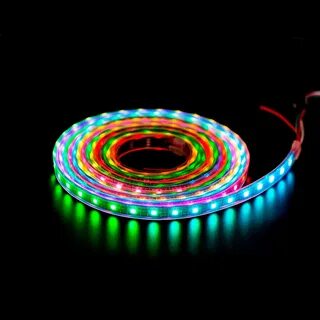
12V led strip lights is low-voltage electrical power, and 220V is high-voltage electricity for civilian use. It could also be said that the input voltage is 220V, and the working voltage is 12V.
It’s convenient to connect the 220V strip directly to the power source 220V however, it isn’t secure.
Led strips that are low-voltage are safer. But when connecting you will need to connect a transformer before it is connected to the power supply.
The light strip plug 220V has a converter with rectifier and constant current output inside. Its rectified and the output voltage that is filtered is 300V DC.
By constant current conversion, it controls the output current to be tens of milliamperes DC to drive the LED light strip. The 12V strip of light is not equipped with a converter, but 12V DC is used to power the LED strip.
The LED selection parameters, and 12v led strip light direct drive
First of all, let me ask a question. is it possible to directly drive a light-emitting diode in series by using the help of a resistor?
The maximum operating current of low-power LED lamp beads that come in various colors is usually 20mA but the actual value is 5 to 15mA.
For low-power red LEDs, the forward voltage drop is 1.6~2V, green ones are usually 1.8~2.4V and blue and white ones are 3~3.3V.
Assume that a blue lamp bead is driven with a 12V power source and the operating current is 9mA. Then, the current-limiting resistance R is equal to (12V-3V/9mA) = 1KO. The forward voltage drop for the blue lamp is 3V.
Even though I picked an LED, it still created problems for me. The brightness is not comparable to the three-color light. However, I only see red.
The 3535MWAP from Nationstar Optoelectronics is the one chosen.
If: refers to the forward current that refers to the current at which the 12v led strip lights is in operation. The working current for ordinary LEDs is extremely low between 10mA and 45mA.
Light-emitting Diodes (LEDs) are connected in series with resistors to protect them from voltage spikes.
LD”lD” means wavelength.
Different materials used to make the die may produce various colors.
Even for the same material there are different luminescent colors that are possible to obtain by altering the form or amount of impurities as well as the composition of the material.
The following table shows the luminescent substances used in LEDs that come in a variety of colors.
Use of Luminous Color Material Wavelength
Red GaP with a normal red color.
High Brilliance Red GaAsP630
Super bright red GaAlAs 660
Super bright Red AlGaInP 625-640
Green in the normal sense GaP
AlGaInP High Brilliance Green 572
Super bright green InGaNg 505-540
Ordinary yellow GaAsP 590-610
Super bright yellow AlGaInP 590-610
Light intensity IV
The light intensity I is the light flux that is released from an illuminationsource in an angle unit.
The luminous intensity unit is called candela (cd) that is usually used in conjunction with millicandela (mcd).
Candela is the luminous power of any light source that is located in a specific direction. Candela is the intensity of the light source in the given direction.
VF: forward voltage
Forward voltage is the term used to describe the voltage drop that is generated between the positive and negative electrodes if the current flowing forward through the LED has specified, and is represented by the symbol VF.
Our company employs SMD LEDs that have a forward voltage ranging from 2.0V up to 3.5V.
The diode may be damaged when the voltage is greater than the normal operating levels. In addition, when the forward voltage is lower than a certain amount (called the threshold) then the current is extremely low and no light is generated.
When the voltage is over an arbitrary level and the forward current quickly grows with the voltage.
The forward voltage drop is only a few hundred volts, so the light emission is incorrect.
View angle: perspective
In the luminous intensity distribution graph the angle resulting from light intensity equal to the half of the intensity that is maximum is known as the half value angle.
Figure 5>.
The direction with the highest brightness of light is the optical direction. In the figure, the angle between mechanical and optical angles is known as the deviation angle.
The thickness of the chip the dimensions overall of the packaging mold strip the thickness of the bracket reflector cup, and the depth of insertion of the bracket inside the mold cavity are directly influenced by the half value angle.
Different sizes of half-value angle are possible to obtain by choosing various materials and package sizes depending on the needs of the customer.
In accordance with the diagram of intensity distribution There are three categories:
A high degree of directivity, generally with pointed epoxy packaging or reflective packaging for cavities, but without adding scattering agent.
The half-value angles range from 5deg to less than 20deg. It is extremely direct and is able to be used as light source for local illumination or used in conjunction with the light detector to create an automatic detection system.
A Standard type is typically used as an indicator lightwith an angle of half value of 20deg-45deg.
C scattering type is an indicator light with more viewing angles with the half-value angle being 45deg to 90deg or more.
